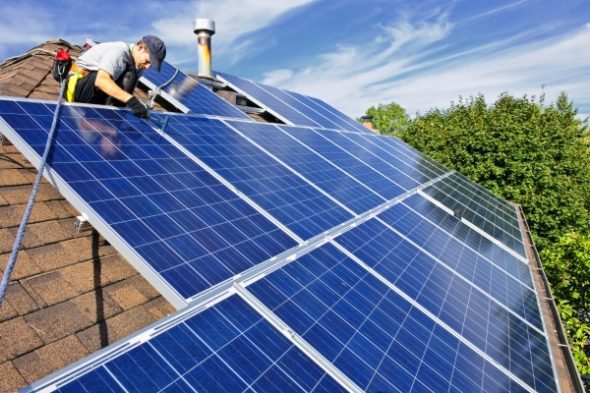The degree to which policy makers and incumbent utilities are struggling to cope with the sudden emergence of solar PV and its impact on traditional electricity systems has been underlined by Dr Mike Nahan, the recently appointed energy minister in Western Australia.
“We are struggling with the new phenomena of solar cells on rooftops – which is changing the world of electricity generation and transmission, and will continue to do so,” Nahan said in an interview with ABC TV’s 7.30 Report in WA.
Nahan’s comments came at the end of a tumultuous week in Perth that saw the government back-flip on a decision to make retrospective cuts to solar feed in tariffs of solar PV.
It had proposed to cut the tariff in half, in order to save just $12 million a year, but changed its decision within just a few days after a furious reaction from many of the 77,000 households affected by the ruling.
Nahan said that governments and utilities were having difficulty coping with the emergence of rooftop solar, which is offering households cheaper access to electricity, but is also reducing the pool of revenue available to networks.
“We are dealing with an important issue. It is not unique to WA, indeed it has affected the entire world,” he said.
Nahan is experiencing a rapid learning curve since taking up his role earlier this year. A former head of the virulently anti-renewable think tank, the Institute of Public Affairs, Nahan insisted that the government would not attempt to make any further changes to the solar tariffs – “we learned our lesson on this one, we won’t do it again” – but was still deciding what action to take over the long term.
As RenewEconomy pointed out last week, this is the key issue for governments. The adoption of rooftop solar will at least double, and probably rise three or four-fold over the next decade as consumers look to lower their bills by generating some of their own electricity needs.
How governments and utilities respond to that is a subject of intense debate. There has been talk of higher fixed charges, particularly following an interview with Colin Barnett earlier this week, but Nahan canvassed the possibility of adopting a similar mechanism for sewage services, where charges are based on land value.
WA’s problems are compounded by the fact that the state subsidises the cost of its largely fossil fuel generation to consumers. This subsidy, Nahan noted, amounted to around $400 a household – creating an electricity tariff deficit that rivals that of Spain.
“That is a subsidy,” Nahan said. “Our tax receipts are under pressure. My task is to cut costs rather than raise prices. I’m going to look at whole electricity system to see if I can get the subsidy back, without raising prices.” He has commissioned the Economic Regulation Authority to conduct a review of tariff options.
High fixed charges are not favoured because they dissuade consumers from installing solar and being more efficient with their consumption.
Adam McHugh, an energy specialist at Murdoch University, said a type of capacity payment – which reflected the amount of electricity a customer could draw from the grid at peak times – was one option. This has been canvassed elsewhere in the industry and it is thought that South Australia is considering such a measure.
Kirsten Rose, the head of the WA Sustainable Energy Association, said it was households that install solar should not be penalized just because they were using less electricity from the grid.
The solar industry has long argued that some of the benefits of rooftop solar – such as reducing peak demand – should be recognized. Rose said it was clear many other customers were also not paying their way – this included people who installed air conditioning and under-floor heating. That’s because the network had to be upgraded to cater for this extra demand. A basic air conditioner adds around $7,000 in costs to the network.










